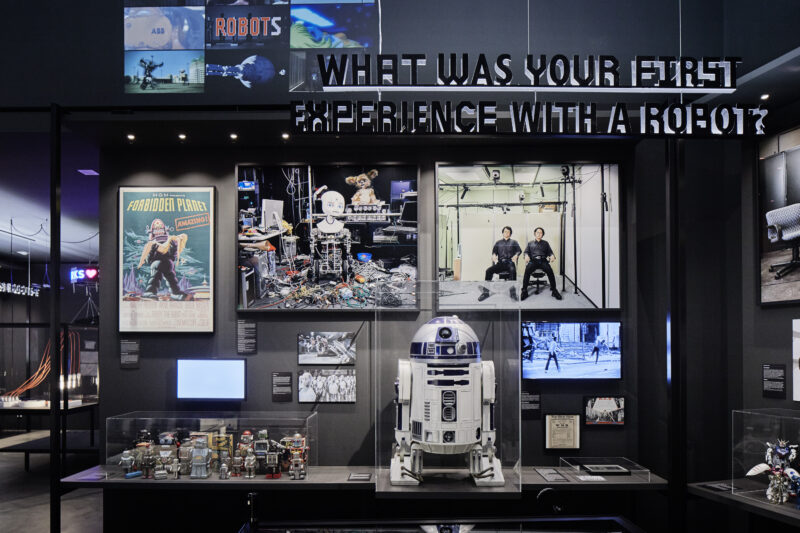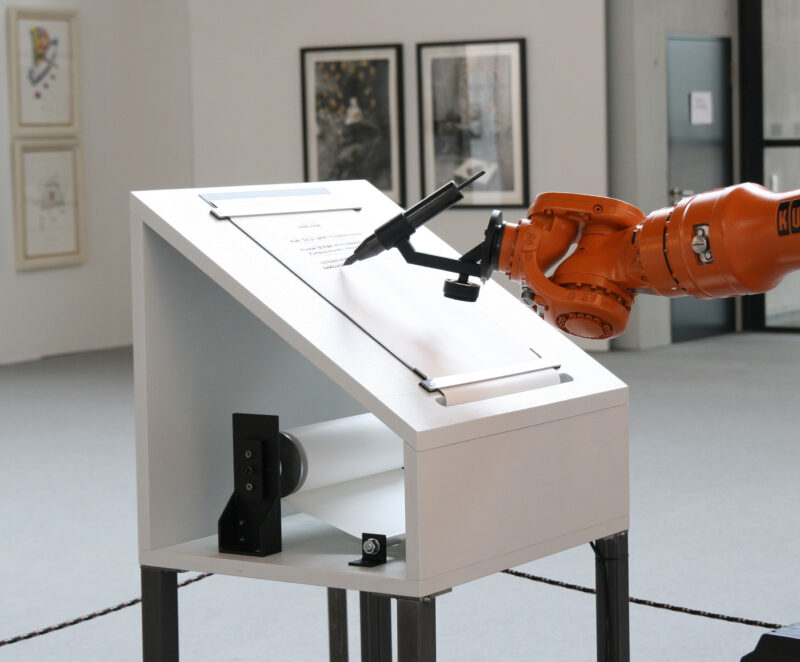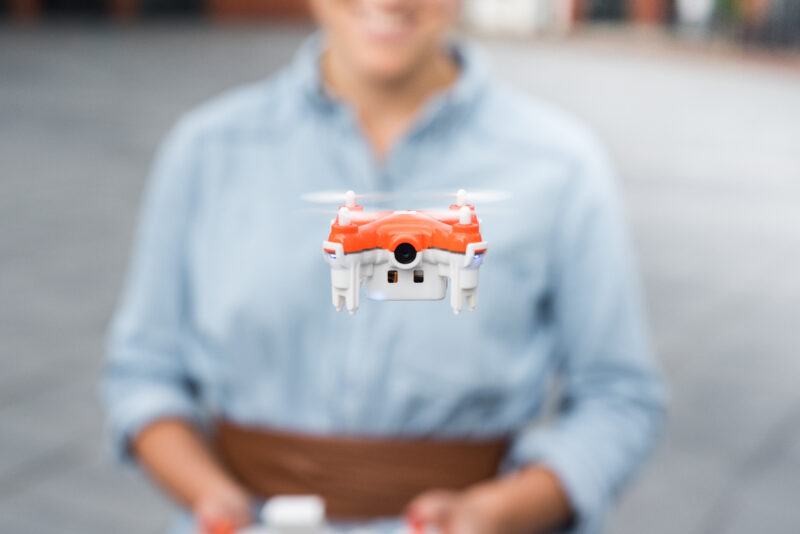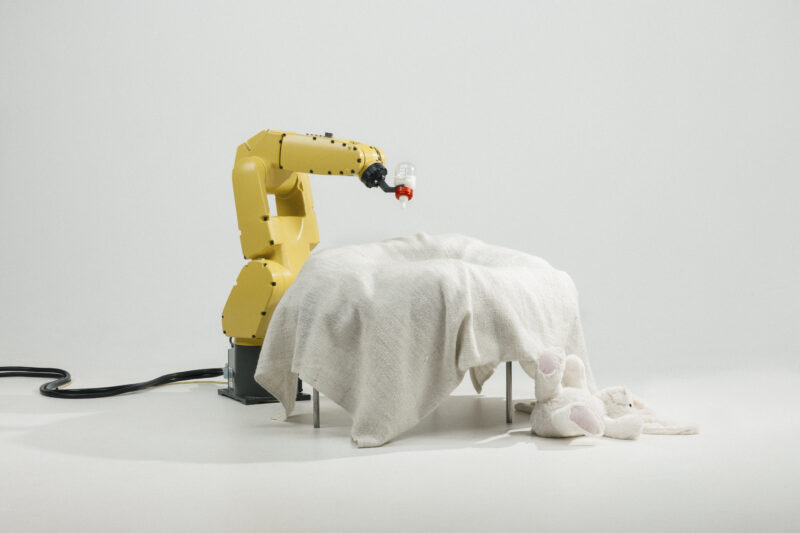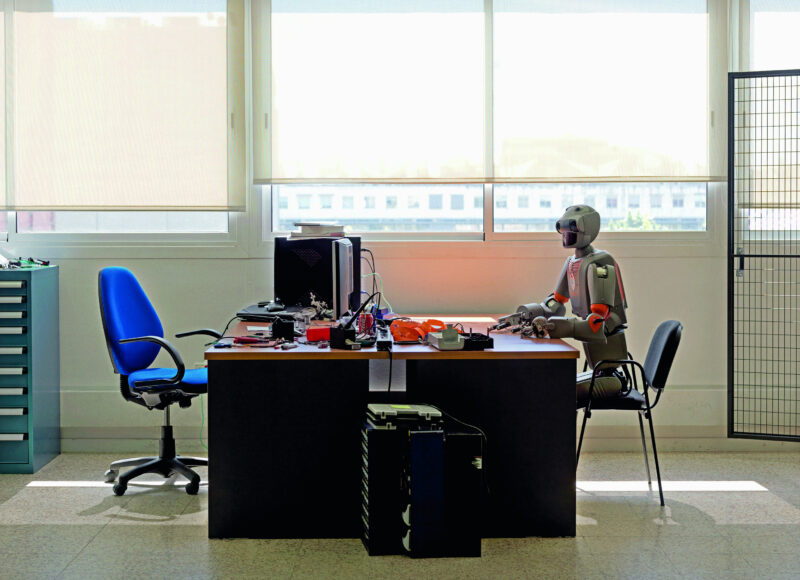
Hello, Robot.
Design Between Human and Machine
Factory operator, film character or military drone – we all know what a robot looks like. But have you ever actually encountered one? The interface between man and machine is getting smaller by the day. The smartphone, for example, has already changed our lives forever. The exhibition Hello, Robot. Design Between Human and Machine lays bare our relationship with technology.
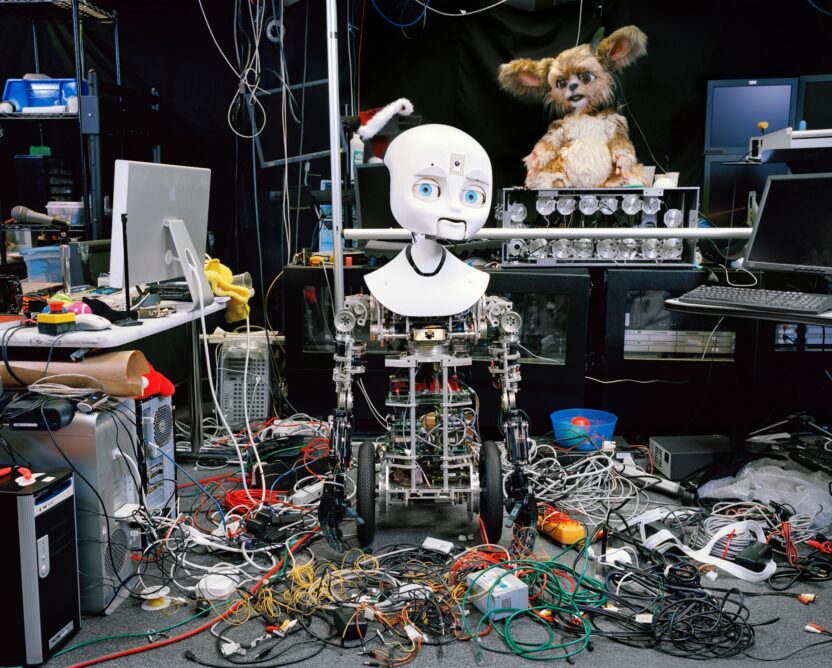
Whether in the form of delivery drones, smart sensors, or Industry 4.0 — in recent years, robotics has found its way into our everyday lives, changing them in fundamental ways. Design has a central role to play in this process, for it is designers who shape the interfaces between humans and machines. From 27 October 2017 to 15 April 2018, the museum will present a major exhibition that examines the current boom in robotics in detail for the first time. Hello, Robot. Design Between Human and Machine is a cooperation between Design Museum Gent, Vitra Design Museum and MAK Vienna. It will comprise more than 200 exhibits from the fields of design and art and will include robots used in the home, in nursing care, and in industry as well as computer games, media installations, and examples of films and literature in which robots feature. It will show the wide variety of forms that robotics takes today and at the same time broaden our awareness of the associated ethical, social, and political issues.
During the last decade, digitalisation has caused a radical redefinition of robotics. Nowadays, robots do not just build cars and washing machines or transport us in self-propelled trains from one airport terminal to another, but appear in a host of other forms, ranging from communicative domestic appliances, the so-called Internet of Things, to the self-learning algorithms in computer programmes, known as bots. Whereas robotics used to be the exclusive domain of engineers and IT experts, today designers are helping to shape the current boom in robotics in key ways, for it is often they who decide how and where we encounter robots, what kind of relationship we form with them, and how we interact with them – or they with us.
Hello, Robot. introduces us to robots in four steps. The first section of the exhibition traces the fascination that artificial humans have long exerted on people in the modern age and looks at how popular culture has shaped our perception of robots. The second section is devoted to the field in which robotics first made a breakthrough: industry and the world of work. Whereas robots are typically perceived in this context as a threat to jobs, Hello, Robot. looks at the current debate on this subject from a number of very different perspectives. The spectrum of exhibits ranges here from classic industrial robots to an installation by the group RobotLab, in which a robot produces manifestos on a production line, thus questioning where the boundary lies between work that can be automated and human creativity. The third section of the exhibition shows how we are gradually coming face to face with the new technology – as a friend and helper in our everyday lives, in our households, in nursing care, as a digital companion, or even in cybersex. The fourth section looks at the increasing blurring of the boundaries between humans and robots – exemplified by our living in learning buildings, travelling through ‘smart cities’, or having smart sensors implanted in our bodies.
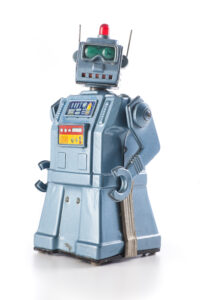
Hello, Robot. shows the ambivalence with which the spread of robotics has been viewed for many decades. Right from the start, the debate about artificial intelligence has oscillated between utopian and dystopian visions, between the hope of a better, technologically advanced world and the fear of disempowerment. In this context, we are once again confronted with the question of the designer’s responsibility.
The controversy about the right approach to robotics is reflected in fourteen questions that guide the viewer through the exhibition as a kind of leitmotif. They invite visitors to reflect on their own attitudes to new technology and show how closely linked the opportunities and risks attendant on robotics often are. For while robotics has become more approachable, more personal, more essential even, the question remains: does it make our world any better?
The 14 questions of the exhibition
- Have you ever met a Robot?
- What was your first experience with a Robot?
- Do we really need Robots?
- Are Robots our friends or our enemies?
- Do you trust Robots?
- Could a Robot do your job?
- Do you want to become a producer yourself?
- How much do you want to rely on smart helpers?
- How do you feel about objects having feelings?
- Do you believe in the death and rebirth of things?
- Do you want a Robot to take care of you?
- Do you want to become better than nature intended?
- Are Robots advancing evolution?
- Would you live in a Robot?
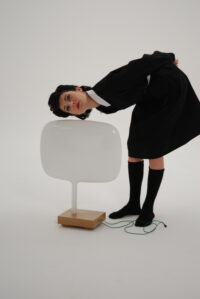
International partners
The exhibition is a cooperation between the Vitra Design Museum, MAK – Österreichisches Museum für angewandte Kunst/Gegenwartskunst, Wien, Vienna, and Design Museum Gent. The curators of the exhibition are Amelie Klein (Vitra Design Museum), Thomas Geisler and Marlies Wirth (MAK Vienna), and Fredo de Smet (Design Museum Gent, advising curator). The team of consultants includes international experts on the subject of robots such as Bruce Sterling, the science-fiction author and network activist; Gesche Joost, head of the Design Research Lab at the University of the Arts Berlin and a member of several bodies advising the German federal government on Industry 4.0; Carlo Ratti, architect and head of the MIT Senseable City Lab in Cambridge, USA; Sabine Himmelsbach, media art historian and director of the Haus der elektronischen Künste Basel; and Paul Feigelfeld, cultural and media researcher and coordinator of the Digital Cultures Research Lab at the Leuphana University of Lüneburg.
Participating artists
Woody Allen, Archigram, Asmbld, automato.farm, Hanna Barbera, Philip Beesley, Wafaa Bilal, Francis Bitonti, Björk, Julius Breitenstein, Bureau d’études, Sander Burger, Edward Burtynsky, Dan Chen, Jan De Coster, Douglas Coupland, Daft Punk, Disney/Pixar Animation Studios, Dunne & Raby, ECAL, Tal Erez, Flower Robotics, Vincent Fournier, Yves Gellie, Gramazio & Kohler Research/ETH Zurich, Kevin Grennan, Susanna Hertrich, Höweler + Yoon Architecture, Zan-Lun Huang, Ted Hunt/Luke Sturgeon/Hiroki Yokoyama, IAAC/Vicente Guallart, ICD University of Stuttgart, Interactive Architecture Lab/UCL the Bartlett, Alfredo Jaar, Spike Jonze, Joris Laarman Lab, Floris Kaayk, Friedrich Kiesler, Elizabeth King/Richard Kizu-Blair, Dirk Vander Kooij, Kraftwerk, KRAM/WEISSHAAR, Stanley Kubrick, George Lucas, Greg Lynn, Keiichi Matsuda, MIT Senseable City Lab, Shawn Maximo, Moth Collective, NASA, Next Nature Network, Christoph Niemann, Tatsuya Matsui, Ruben Pater/Gonçalo F Cardoso, Johanna Pichlbauer/Mia Meusburger, Eric Pickersgill, Joseph Popper, Gerard Ralló, Carlo Ratti Associati, RC4/UCL the Bartlett/CurVoxels, Alexander Reben, robotlab, Rafaël Rozendaal, Philipp Schmitt/Stephan Bogner/Jonas Voigt, Takanori Shibata, Masamune Shirow, Hajime Sorayama, Ismael Soto, Bruce Sterling/ Sheldon Brown, Superflux, Jacques Tati, Kibwe Tavares, Osamu Tezuka, Anouk Wipprecht and many others.
Exhibition catalogue
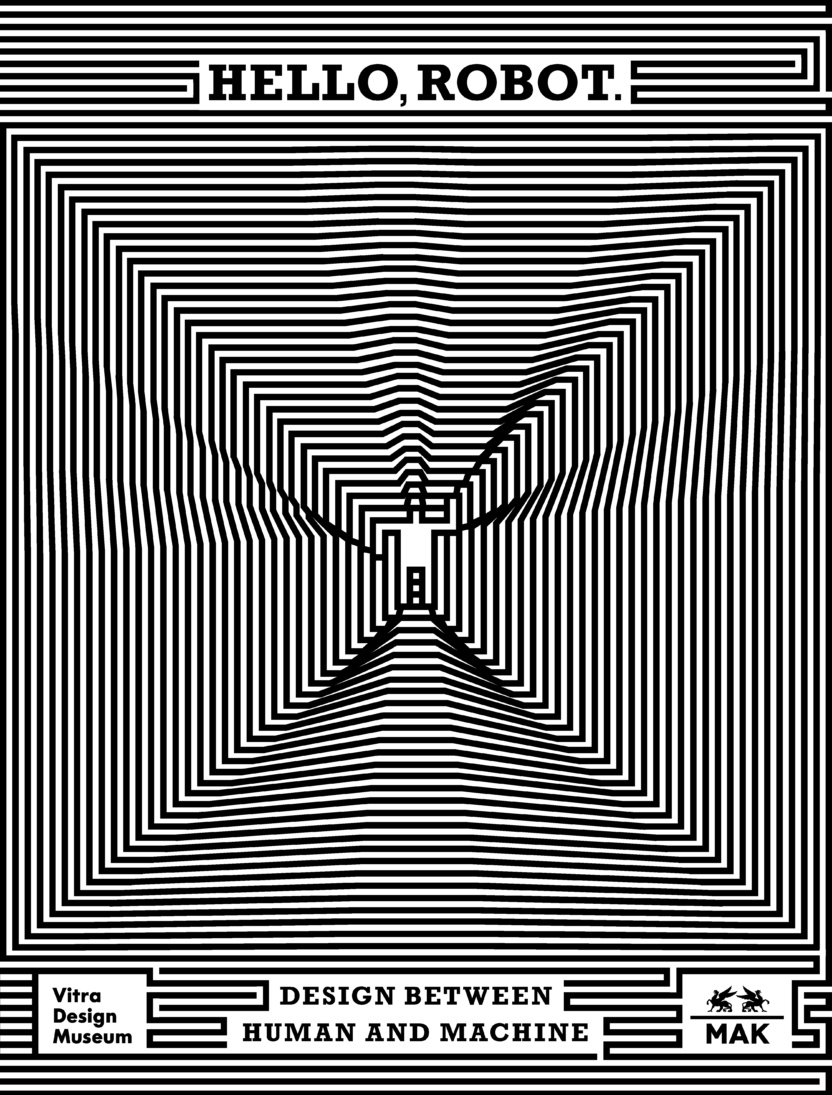
The book Hello, Robot. Design between Human and Machine published in conjunction with the exhibition shows us all the places where we are already encountering intelligent machines: in industry, the military, and in our everyday environment; in children’s rooms and retirement homes; in our bodies and in the Cloud; in shopping and sex; in computer games; and, last but not least, in films and literature.
In essays and interviews, experts examine in more detail how we are dealing with the fact that our environment is becoming ever more digital, ever smarter, and ever more autonomous. They highlight our often ambivalent attitude to new technologies and discuss the ethical and political questions that robotics raises for us as individuals and for society.
Contributors: Rosi Braidotti, Douglas Coupland, Anthony Dunne & Fiona Raby (Dunne & Raby), Christoph Engemann, Paul Feigelfeld, Gesche Joost, Amelie Klein, Carlo Ratti, RobotLab, Bruce Sterling and many more.
The layout of the book was designed by an algorithm in cooperation with Double Standards, Berlin. Cover illustration: Christoph Niemann.
Visiting information
Hello, Robot.
27.10.2017 – 15.04.2018
Admission: € 10 | € 8 | € 6 | € 2 | € 0
Open on weekdays from 9:30 until 17:30
Open on weekends, on public holidays and during school holidays from 10:00 until 18:00
Closed on Wednesday
Sandra Plasschaert
Cats Communication
Press & PR
+32 479 35 10 39
sandra@catscommunication.be
Simon Adriaensen
Design Museum Gent
Communication
+32 09 234 68 88
simon.adriaensen@stad.gent
